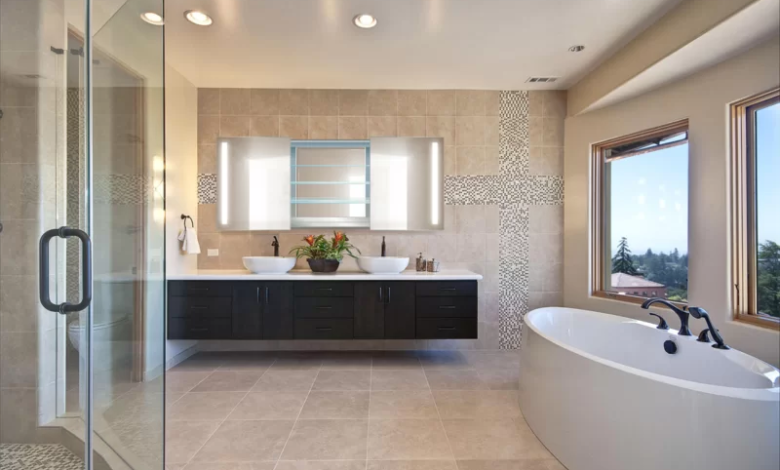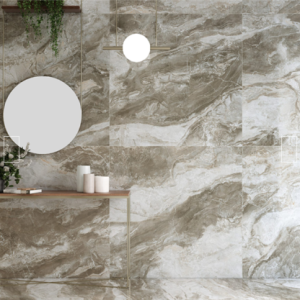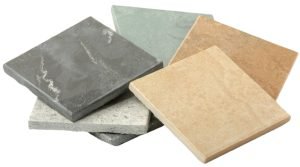Which Paving Tiles Are Suitable For Lighting Aspect For Installation Of Tiles

When it comes to tile installation, lighting plays an important role in the way that the final results will look. Modern bathrooms have a variety of lighting fixtures, such as those inside the shower or bath and even above the walls.
There are a lot of splashbacks that feature contemporary LED strip lights, and even though they give a modern appearance, the location of lighting can result in an impact on the look of the tiles. Even with flawless tile installation, there will be some slight distortion due to the natural variations in the surface of the tile is inevitable.
The light can pick up the smallest variation and cast a huge shadow over the tile’s surface joints, drastically altering the appearance of the tiles. The intensity of shadow is dependent on the angle at which light is reflect.
The top illustrates the effects on overhead light panels. This harsh lighting method creates shadows that highlight any imperfections on the tile’s surface. If the lighting is shut off, there is a significant visual improvement.
Except as specifically specify in the contract’s specifications, flaws that can be seen only in the light of a critical source do not necessarily indicate poor work. Source: Building.govt.NZ.
Check out the following ideas for lighting within a tile installation.
- Install the permanent lighting prior to tile installation. This allows the tile installer to make any adjustments needed throughout the installation.
- Place light fixtures in a location that is not too close to the wall’s edge Moving the light fixtures just a few centimetres from the wall’s edge can alter the visual appearance of the tile.
- If wall-washing effects for lighting are desired, ensure that the substrate is flat and level as any variation in the level of the substrate could make it harder to place the tiles.
Ask an Expert: How to install tiles within your bathroom? The most important thing to consider is what you don’t notice.
Selecting the tile shop London and planning the layout of your newly renovated bathroom is a wonderful chance to let your creativity flow. Any kind of tile, whether it’s porcelain, ceramic or stone, will perform effectively. When you plan the installation of your tiles, keep in mind the primary thing is the part that you cannot see.
The parts that are not visible in the tile installation include:
* To create a solid flat, plumb and square substrate
* Installing a foolproof moisture barrier for walls surrounding the tub and framing showers and bathtubs.
The ideal substrate for tile installation is an open-set mortar bed that has a minimum thickness of 1 inch. To prepare the walls and floor the tile setter puts the water barrier made of Kraft papers or 15-pound fell (asphalt-saturated felt) on top of which is affixed an underlying layer of wire mesh.
The tile setter then laid the sand in a floating float, and cement mortar, which is followed by an orderly set of screed boards to form an even, flat and even surface to fix the tile.
A mortar layer will level and even out any unevenness in the subfloor or walls. It will also create a solid foundation that will allow the installation of the tile. Wood floors, regardless of how sturdy, will deflect little when we walk across them. With no mortar bed, this deflection could cause the grout and tiles to crack and then fall off.

Tips To Install Ceramic Flooring And Tiles
There are a variety of factors to consider when it comes time to install ceramic materials. From the levelling process and what type of cement to the amount of traffic the road will able to support, and how the tiles are place.
Every aspect is important to get the perfect final result. It’s not worth choosing the most stunning look or highest-quality tiles for our area when the installation isn’t right.
1. Make Sure The Level Is Correct And Adjust It With Self-Levelling
The support on which the ceramic tile is to set must be homogenous to ensure there are no gaps between tile and support. When setting there is a chance that tiny variations could occur between the pieces.
Therefore, it is recommended to use an edging mortar to get an even, smooth and uniform base that is fully in sync with adhesives that are used prior to the flooring being installed. The self-levelling agents used may be used for outdoor or indoor usage.
In the thickness, it will be contingent on the amount of traffic (light commercial or industrial usage) and the level to be corrected. It is important to ensure that the surface on which the pieces are put down is free of grease, dust, water and other traces of contamination.
2. Master Line Should Be Drawn Out.
The mainline should be in line with the flooring. This will make it easier to set the initial tiles and allows for the use of more ceramic materials.
3. Determine The Best Position For The Pieces
It is suggested that the decision of which pieces to place is made on the actual surface; considering that each piece is unique in its style. If we’re looking to create an unexpected result, we’ll apply various designs to the pieces.
It is important to note that if items are big, they must have the assistance of two persons. To facilitate the process we can employ suction cups to increase adhesion and security.

4. Choose The Appropriate Adhesive Cement
The cement used to attach the ceramic has a high elasticity and outstanding adhesion. We should select the right adhesive in accordance with several factors:
- The kind of ceramic that we would like to adhere
- The location where we’ll put the structure (inside the building or the outside)
- The climatology to it will be subject
The classification of these tile contractors in London is guided by standard guidelines to make the selection simpler. They are based on the values of adhesion, setting slips and open times. There are several types of each of these variables in accordance with their characteristics (normal or improved, fast-setting low-slip, fast-setting).
5. Spread The Bonding Cement Over The Surface That Is Level
We’ll make the mix following the manufacturer’s guidelines. Once the desired texture is reach, and always follows the master line establish then we’ll apply the bonding cement to the previously levelled and compact surface.
6. Apply The Cement To The Ceramic Piece
The cement will spread on the ceramic piece in order to create a double-glueing result on the supporting as well as the piece. Be sure your cement is even and of an equal thickness across both sides.
To accomplish this, we’ll make use of an elongated trowel that has a tooth size of 10 millimetres. The adhesive will distribute perpendicularly to the length of the piece. So there is no air that might be below that can escape.
7. Install The Pieces
After the side of the piece is fixed to the cement that bonds it. We’ll then connect it to the substrate that we’ve previously traced using that same cement.
Make sure you adhere to the master traced line. To set the piece we’ll gently tap it with a mallet made of rubber that is flexible, and this will remove any air bubbles that might be present inside the glue.
Then, the best tile shops London will place the remaining pieces considering the minimum joint distance. Which is at least 2 millimetres is required between them. It is possible to keep this distance kept by using crossheads that are spacers.




